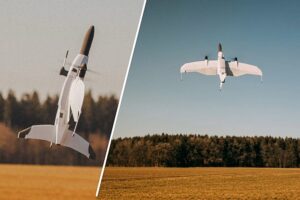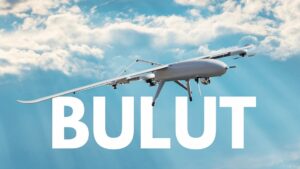The Spanish military is set to get a fleet of drones made by Skydio in a contract that could be worth more than $18 million. It’s a huge sign for the American drone company, which initially launched making consumer-focused camera drones but pivoted to make small yet powerful drones for enterprise and military use.
In an initial tender valued at up to €18 million, Skydio — in partnership with Spain’s Paukner Group — is set to equip the Spanish Armed Forces with a fleet of Skydio X10D drones. This move not only underlines the increasing reliance on small, agile unmanned systems in modern military operations but also signals a broader trend of international interest in American drone innovation.
How the Spanish military plans to use Skydio drones
Spain’s decision to field the X10D marks a significant strategic pivot in European defense procurement. In partnering with the Paukner Group — a stalwart in the Spanish defense and security market with 50 years of experience — Skydio not only gains access to new markets but also reinforces the credibility of American drone technology on the international stage.
Under this tender, the Spanish Army will deploy the X10D drone across missions ranging from force protection and reconnaissance to facility security and crowd control.
How Skydio came to be a military powerhouse
Skydio was founded in 2014, first coming onto the scene with its follow-me drone called the Skydio R1. That drone launched back in 2018 that primarily targeted action sports photographers. But as American drone companies discovered that it’s difficult to compete with DJI on consumer drones, Skydio (and others, like Teal) pivoted to making drones for military uses. To do that, the company has leaned into key features for military uses including advanced AI and rapid deployment.
The Skydio X10D, which began shipping to customers in 2024, epitomizes this evolution. Engineered for Intelligence, Surveillance, and Reconnaissance (ISR) applications, the X10D integrates sensor suites, onboard AI and a modular open architecture that can adapt to military operational needs.
These days, Skydio drones are in use across every branch of the U.S. Department of Defense. Just last year, Skydio announced a massive U.S. Army contract worth potentially up to $99.8 million.
What’s more, they’ve been adopted by 25 allied nations.
“This win is a reflection of the growing importance of small drones on the modern battlefield,” said Adam Bry, CEO and co-founder at Skydio in a prepared statement. “X10D – with onboard AI, autonomy, and powerful sensors – is resilient in contested environments, making it the ideal choice for Spain’s Armed Forces human-machine teaming missions.”
The X10D’s advanced autonomous navigation and robust sensor technology allow for real-time data collection in environments where traditional, larger systems might falter. Moreover, its resilience against electronic warfare — thanks to onboard AI — ensures that these drones can operate effectively even when adversaries attempt to disrupt communications and control systems.
Growing use of small drones in military
Across the globe, militaries are increasingly turning to small drones like what Skydio builds for their potent combination of agility, cost-effectiveness and advanced capabilities. In years past, small drones might have merely been used for reconnaissance. These days, small drones roles are becoming integral to the entire spectrum of military operations.
Much of that is evidened by the Russian-Ukraine War, which is often described as the “first full-scale drone war.”
“By the end of 2022, Ukraine had successfully repelled much of the Russian invasion force, a remarkable achievement attributed to its resourcefulness in leveraging UAV technology to overcome shortages in conventional munitions,” Mary-Lou Smulders, Chief Marketing Officer at Dedrone wrote in an op-ed for The Drone Girl.
“This transformation in aerial warfare has fundamentally and forever changed the definition of air superiority, setting a precedent for future conflicts — and emphasizing the importance of adaptability and innovation in modern military strategy,” she wrote.
Skydio’s entry into the Spanish market is more than just a contract win; it’s a harbinger of what’s to come in the realm of military technology. As defense forces increasingly embrace human-machine teaming, the integration of autonomous drones will become standard practice on modern battlefields.
And as electronic warfare and cyber threats become more sophisticated, small drones will play a huge role in military tactics and operations.
The post Skydio lands major Spanish military contract to supply drones appeared first on The Drone Girl.


